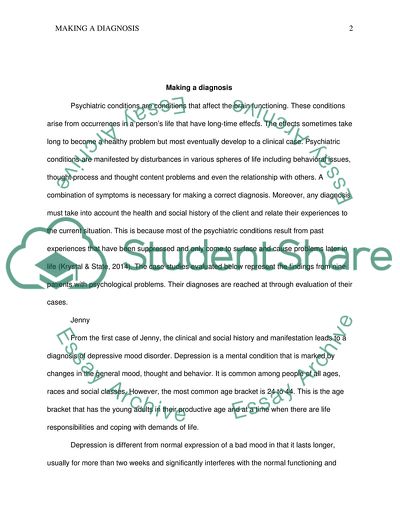Cite this document
(Making a Psychiatric Diagnosis Assignment Example | Topics and Well Written Essays - 2500 words, n.d.)
Making a Psychiatric Diagnosis Assignment Example | Topics and Well Written Essays - 2500 words. https://studentshare.org/psychology/1838653-case-study-vignettes-making-a-diagnosis
Making a Psychiatric Diagnosis Assignment Example | Topics and Well Written Essays - 2500 words. https://studentshare.org/psychology/1838653-case-study-vignettes-making-a-diagnosis
(Making a Psychiatric Diagnosis Assignment Example | Topics and Well Written Essays - 2500 Words)
Making a Psychiatric Diagnosis Assignment Example | Topics and Well Written Essays - 2500 Words. https://studentshare.org/psychology/1838653-case-study-vignettes-making-a-diagnosis.
Making a Psychiatric Diagnosis Assignment Example | Topics and Well Written Essays - 2500 Words. https://studentshare.org/psychology/1838653-case-study-vignettes-making-a-diagnosis.
“Making a Psychiatric Diagnosis Assignment Example | Topics and Well Written Essays - 2500 Words”. https://studentshare.org/psychology/1838653-case-study-vignettes-making-a-diagnosis.


